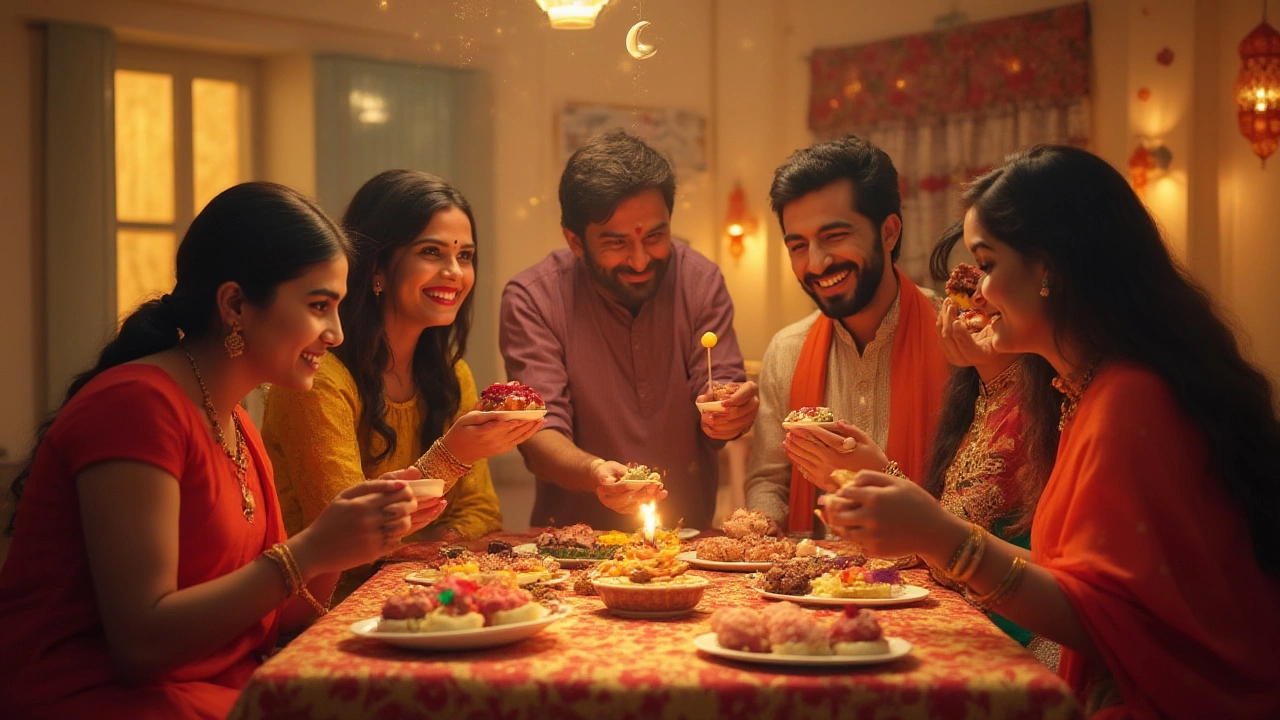Traditional Muslim Sweets – Authentic Flavors & Simple Recipes
When you think of Indian celebrations, chances are a plate of glossy, syrup‑soaked sweets will be right in front of you. These treats aren’t just tasty; they’re part of a cultural story that stretches back centuries. If you’re curious about what makes a sweet “Muslim” and how you can whip up a few classics in your kitchen, you’re in the right spot.
What makes a sweet "Muslim"?
Traditional Muslim sweets usually follow the same basic rules: they’re made with halal ingredients, they avoid pork‑derived fats, and they often feature honey, ghee, nuts, and aromatic spices. Many of these desserts were shaped by the need to break fasts during Ramadan, so they’re designed to give a quick boost of energy. Think about the silky texture of sheermal or the melt‑in‑your‑mouth feel of malpua. The flavors often lean on cardamom, saffron, and rose water, giving each bite a fragrant punch.
Geography also matters. In Hyderabad, you’ll find double ka meetha – bread soaked in milk and topped with pistachios. In Lucknow, the iconic shahi tukda layers fried bread, condensed milk, and a sprinkle of silver leaf. Even though the names change, the core idea stays the same: a rich, sweet base paired with nuts or dried fruit for texture.
Easy recipes to try at home
Ready to tasting? Here are three quick recipes that need just a few pantry staples.
1. Simple Sheer Khurma
- 1/2 cup vermicelli, broken into small pieces
- 2 cups milk
- 3 tbsp sugar (adjust to taste)
- A pinch of cardamom powder
- Handful of chopped almonds and raisins
Heat a pan, melt a spoonful of ghee, and toast the vermicelli until golden. Add milk and bring to a gentle boil. Stir in sugar and cardamom, then simmer until the mixture thickens. Toss in nuts, serve warm or chilled.
2. Quick Badam Halwa
- 1 cup ground almonds (badam powder)
- 1/2 cup sugar
- 1/4 cup ghee
- 1 cup water
- A few saffron strands
Boil water and sugar together, then add the almond powder. Cook on low heat, stirring continuously. When the mixture starts to leave the sides of the pan, stir in ghee and saffron. Keep cooking until it glistens. Scoop into a bowl and enjoy.
3. Fast Ramadan Milk Barfi
- 2 cups condensed milk
- 1 cup powdered milk
- 2 tbsp ghee
- 1/2 tsp cardamom
Mix all ingredients in a thick-bottomed pan over medium heat. Keep stirring until the mixture thickens and starts to pull away from the pan. Transfer to a greased tray, flatten with a spatula, and let it set. Cut into squares and serve.
These recipes are flexible – swap pistachios for cashews, or add a drizzle of honey for extra shine. The key is not to rush; gentle heat lets the flavors meld nicely.
Whether you’re planning a Ramadan Iftar, a festive wedding, or just a sweet treat after dinner, traditional Muslim sweets bring a sense of warm hospitality to any table. Keep the spices, nuts, and love flowing, and you’ll soon have a collection of desserts that feel both familiar and special.
Got a favorite sweet that’s missing from this list? Share it with friends or family and keep the tradition alive. Happy cooking!
Why Do Muslims Love Sweets? Exploring Traditional Islamic Dessert Culture
Discover why sweets play such an important role in Muslim life—from Eid to Ramadan. Uncover fascinating traditions, facts, and irresistible recipes from the Islamic world.
